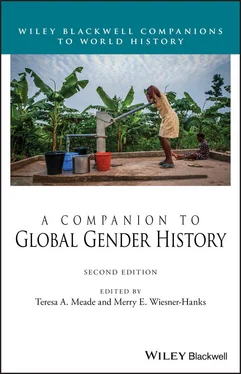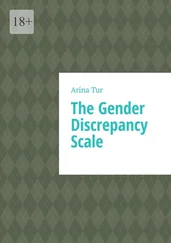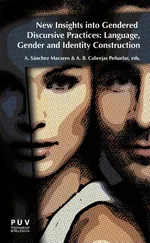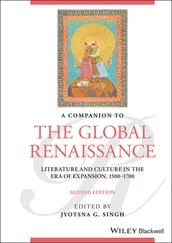The 2019 Women’s March, two years after the first, was significantly smaller, in part because of protest fatigue, poor weather, and energies being directed toward elections and local actions. Most notably, controversy erupted over the fact that several of the March co‐chairs had attended rallies organized by Nation of Islam leader Louis Farrakhan and had refused to denounce his virulently anti‐Semitic, homophobic, and transphobic remarks. A good number of participants commented that they attended despite, not because of, the organizers. Such divisions are common in fast‐growing social movements, but they point out the difficulties of putting intersectional analysis into practice. Systems of oppression reinforce one another, but they also cross‐cut one another. At women’s marches in cities and towns across the US in both 2017 and 2019 participants brandished posters for Black Lives Matter and immigrant rights; other signs read: “Don’t Forget: White Women Voted for Trump” or “Will We See You at the Next Black Lives Matter March?” There were posters and models of vaginas, vulvas, and birth canals, a reclamation of female anatomy in response to Trump’s pussy comment, but an exclusion of trans women from their depiction of who was a woman.
Other recent social protest movements that focus on issues related to gender have been similarly challenged by disputes over the varied categories of difference and oppression. The MeToo movement, begun in 2006 by Black civil rights activist Tarana Burke, pointed to the pervasiveness of sexual abuse and assault; however, the slogan only caught on widely when it was picked up in 2017 by the (white) American actress Alyssa Milano. She posted a message on her Twitter account encouraging survivors of sexual harassment and assault, especially in the workplace, to post #metoo as a status update, in order to capture the extent of the problem. The movement spread virally across social media platforms, first in the US and then internationally, and led to a number of high‐profile firings and some changes in the entertainment, fashion, and other industries. Critics point out, however, that white feminists had not supported Burke’s original movement, and that minority women are more likely than white women to be the targets of sexual abuse, as they are overrepresented in workplaces such as hotels and healthcare where sexual harassment and assault charges are common. Burke and Milano have strongly supported each other and along with several other activists were named Time magazine’s Person of the Year in 2017 as “the silence breakers,” but the issue of whose voices are heard and whose are not remains.
Criticism of feminism for not being cognizant of other systems of oppression, or being complicit in these, is not new. When it was first published in 1984, Robyn Morgan identified her book, Sisterhood is Global, as an act of rebellion against the pervasive mentality of patriarchy worldwide, where “the standard for being human is being male – and female humans per se become invisible” (1). The book compiled a massive and valuable collection of quantitative and qualitative research on women’s lives in seventy countries contributed by women who were (but for one) natives of those countries. The research provided a cross‐cultural study of women’s experience in a multitude of categories including health, labor, law, marriage, economics, and religion. Its clear implication was that women everywhere suffer the effects of male‐dominated institutions, albeit to a wide‐ranging degree. Its conclusion, implied in the introductory question, “Are we really so very different?” was that women worldwide are united in a sisterhood in search of self, selfhood, and self‐realization (36). But the book did not directly confront the ways women and societies are so very different, nor the fact that patriarchy has embedded within it various class, racial, religious, ethnic, and other social features. It did not interrogate the idea of women as a coherent category or the meaning of the term women . The notion of a global sisterhood , in a sense, refused the category of race and other differences that separate women.
Events like the 2017 Women’s March offer brief moments when the challenges in all social justice struggles come together to motivate an action (reflected in the poster “This space isn’t big enough for everything I’m protesting”), but in general feminists have adopted Smith’s idea more than Morgan’s. As Chandra Mohanty put it, “beyond sisterhood there are still racism, colonialism, and imperialism” (2003: 68). Feminist theory has paid great attention to relationships of power among and between women, and has attempted to dismantle false universals. We have acknowledged the problem of finding terms through which we can talk about women’s lives, recognizing that all terms signify false assumptions and simplistic consolidations, such as Western women, Third World women , Native American women , Black women , White women , Women of Color , African women , Asian women , Latin American women , Latina or Latinx women, and so on. Even the term women disintegrates under the influence of sex‐gender theories of identity formation, for we know that the body lies and that essentialist biological definitions of women are themselves constructed concepts within discourses of power and authority, such as science and medicine. The terms matter, of course, because they reflect and construct the ways we think and talk about women, concealing or revealing hierarchies among and between women. And yet we cannot talk about women’s lives without terms that acknowledge and distinguish our historical and cultural experiences. More importantly, without finding terms through which we can talk about women’s lives and our differences, we cannot effect genuine social change, the ultimate purpose of all feminist endeavors.
This feminist analysis has been more extensive in some areas than in others. It has been particularly strong in exploring the intersection of race and gender, and far less so in examining class. Linda Gordon recently commented:
Neglecting class or economic inequality – and I am aware that these two are by no means identical – is a common and over‐determined phenomenon. Identifying classes in the Marxian sense is difficult if not impossible today, in the USA in particular, as deindustrialisation and union‐busting have decimated a working class and forced so many workers into a precariat of casual, impermanent jobs.”
(2016: 348)
Although Gordon and others call for an analysis that takes economic injustice into account, our chapter focuses in detail on feminist analysis of race and gender, and then more briefly on sexuality, borderlands identities, and disability, while acknowledging the place of class and the state in effecting those categories. As one of many essays in this volume, its purpose is to examine feminism in relation to race and ethnicity as a contribution to a global analysis.
We have all used and encountered the terms of race – racial difference, racism, racial oppression and liberation – as though their meanings are understood. Yet there exists no coherent or stable meaning for the word “race.” From a very early point in human history people developed concepts about human groups, particularly their own, based on real or perceived kinship and shared culture. They used a variety of words to describe these groups; in English they include tribe, people, ethnicity, background, race, community, and nation. Historically the group was created and maintained by intermarriage, while membership in it was understood to be contained in, and passed down through, the blood. In many cultures, “blood” also became a way of thinking about difference within the group, with those of “noble blood” prohibited from marrying commoners and taught to be concerned about their bloodlines. Blood also came to be used to describe religious and national boundaries, as people talked about “Jewish blood,” “French blood” and so on. Describing differences as blood naturalized them, making them appear as if they were divinely created. Nonetheless, people often held contradictory ideas, and religious reformers who talked about Protestant or Catholic or Jewish blood also worked for religious conversions, without thinking about whether adopting a new religion would also change a person’s blood.
Читать дальше












